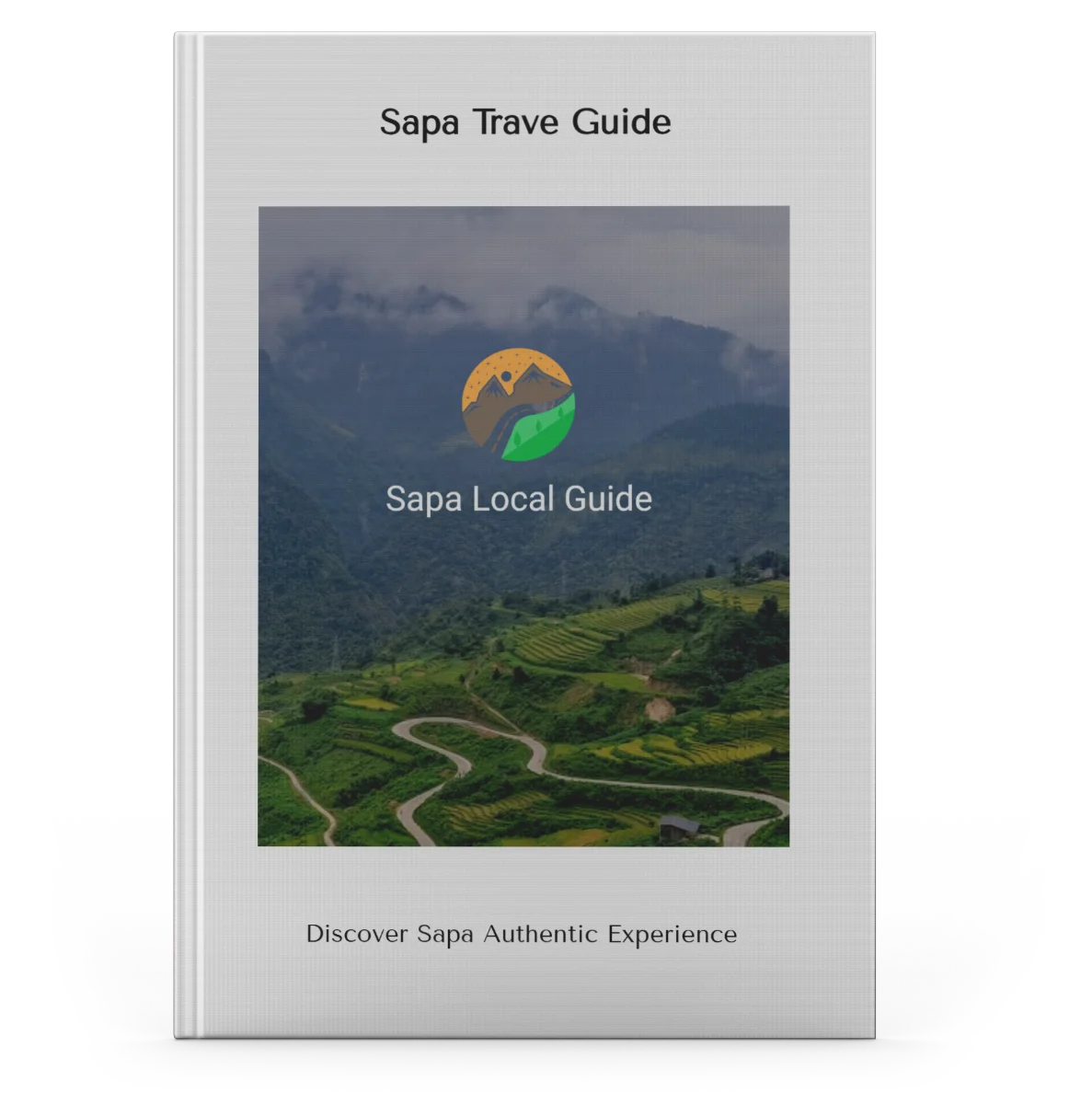![]()
Authentic Experience of Sapa
Discover the magic of Fansipan Mountain with these 8 unforgettable experiences, from breathtaking views to thrilling adventures you won't want to miss!
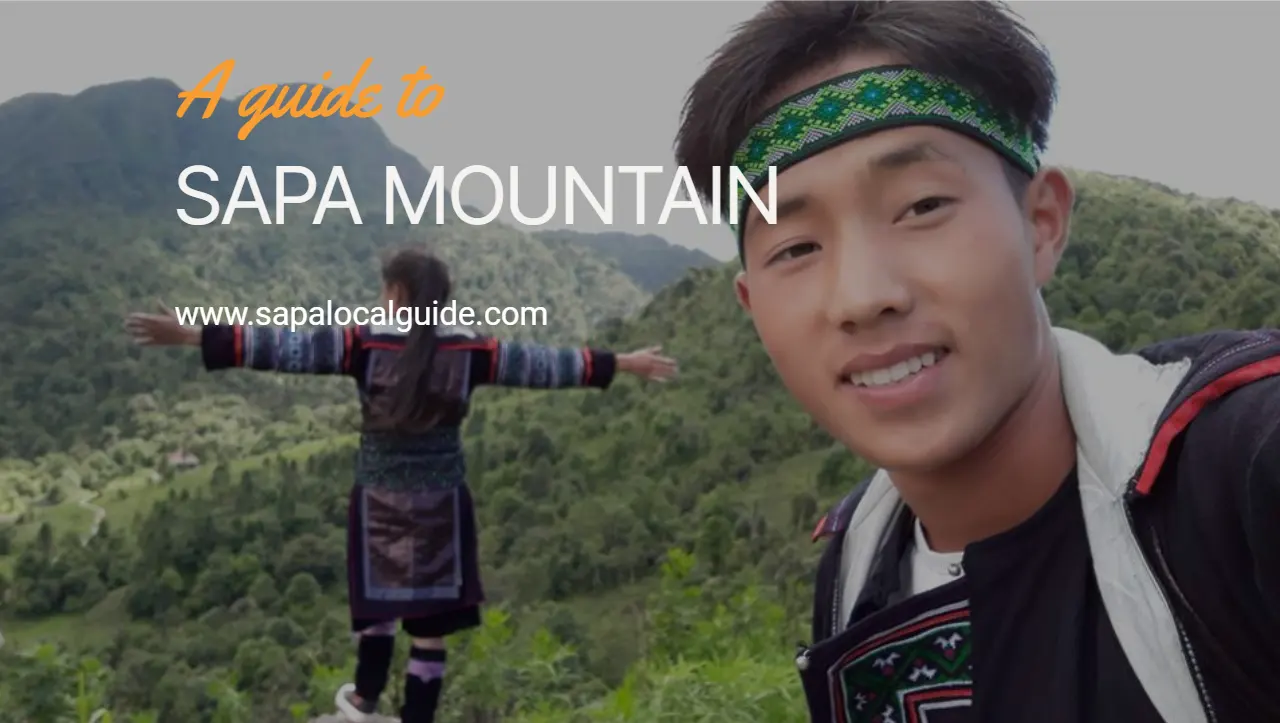
With the Sapa Local Guide to see Fansipan Mountain, near Sapa, stands 3,143 meters tall and is the highest in Vietnam and Indochina. It’s part of the Hoang Lien Son mountain range. Before the cable car, only fit and the Local adventurous travelers could climb to the top. Now, anyone can reach the peak.
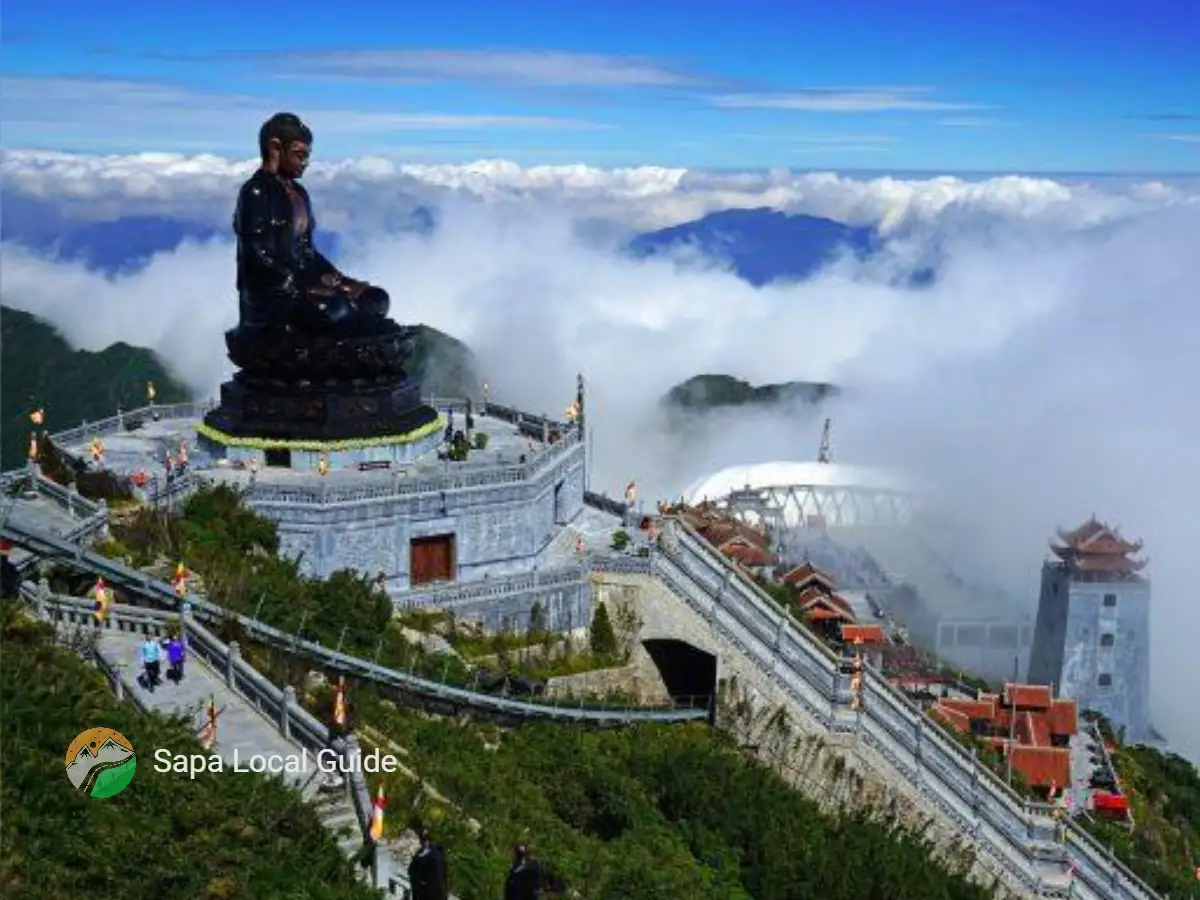
Fansipan was once the best mountain in Vietnam for a Local guide hiking. Before 2016, the only way to reach the summit was by foot, which could take one to three days. However, since February 2016, a cable car has been available, allowing you to reach the top in just 15-20 minutes. If you enjoy challenges, you can still choose to hike, which can be done in one, two, or three days. On longer hikes, you'll stay in a cabin or tent on the mountain. Keep in mind that the summit is often in the clouds, so there might not be much to see. Hike mainly for the local experience.
If you're visiting Sapa for the stunning views of rice fields and want to explore the local ethnic cultures, it's better to skip the Fansipan hike and trek through the Muong Hoa valley instead.
But if you want to stand on the highest mountain in Vietnam without the tiring climb, take the Fansipan cable car.
Continue reading here to learn everything you need to know about climbing Fansipan.
1. Mountain train
The first highlight of Fansipan is the funicular train that takes you from Sapa town to the cable car station. This train is also called the Muong Hoa mountain train because it offers views of Sapa's famous rice fields in the Muong Hoa valley. The train starts near the MGallery hotel in the city. Along the way, it goes through a few tunnels and crosses an impressive bridge, offering some of the best views during the ride.
=>See about Sapa famous rice fields in the Muong Hoa valley Here!
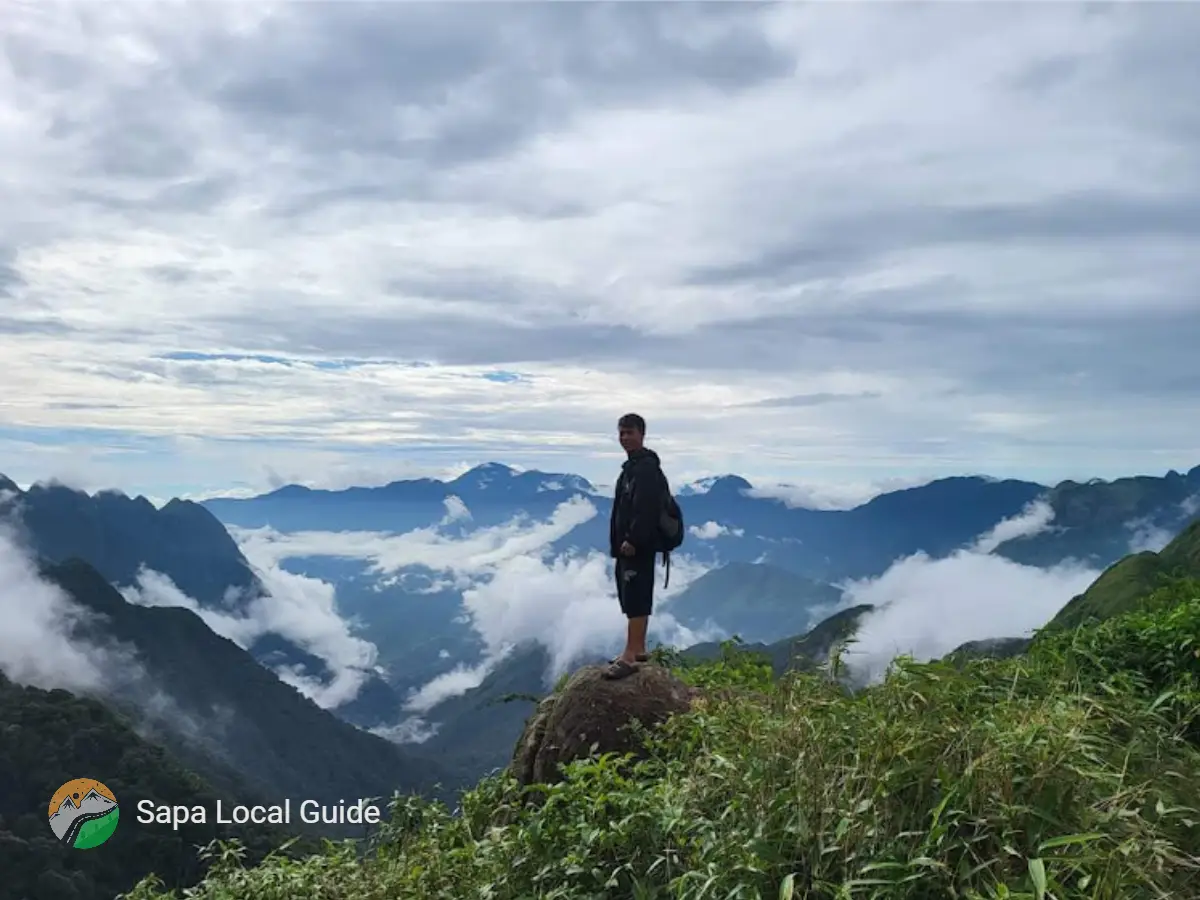
2. Fansipan cable car
If you don't like walking or if your budget or body isn't up for it, you can take the cable car instead. The Fansipan Legend cable car is also an adventure because it's the longest three-cable car in the world, stretching 6,292.5 meters. It also holds the record for the highest gain, rising 1,410 meters. The cable car floats through the clouds, offering views of the Muong Hoa Valley and the beautiful peaks of the Hoang Lien Son Range.
Cable car ticket price and opening times
The cable car is open every day from 7:30 AM to 5:30 PM.
Because of this, it's hard to see the sunrise or sunset at the top of Fansipan. But try to be there around noon when it's usually less foggy.
You can buy tickets online on the Fansipan Sunworld website or at the station. The ticket prices are clearly posted. It costs 850,000 VND for adults and 550,000 VND for children. Kids shorter than 1 meter can ride for free.
3. Peak of Fansipan
To reach the top of Fansipan from the station, you need to climb more than 600 steps. The views from the top are definitely the best part of Fansipan.
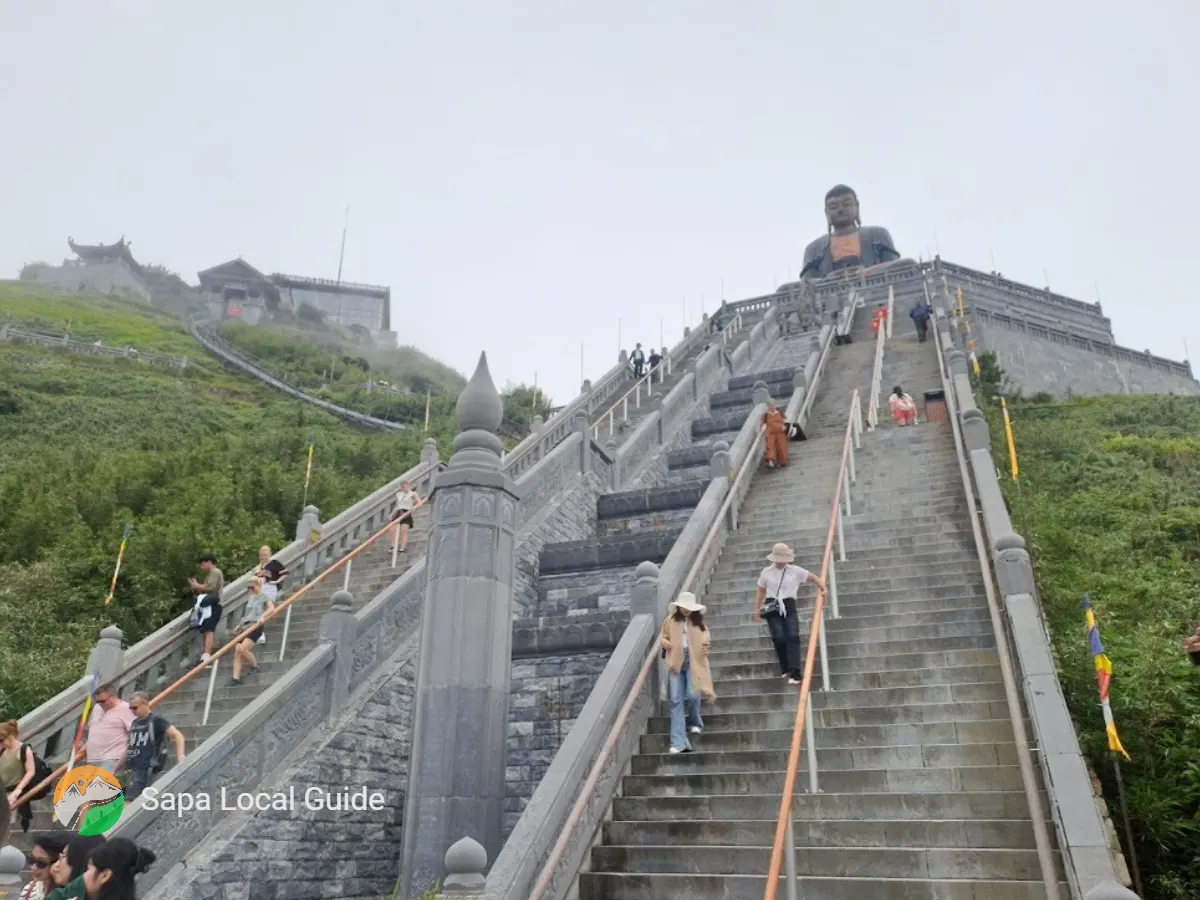
4. Funicular train to the peak
If you're healthy or the weather is nice, get a local guide climbing the steps to the peak shouldn't be hard. But for older people or on windy days, you can take the Do Quyen mountain train to reach Fansipan. You can buy a one-way or round-trip ticket, depending on your needs. The train starts right next to the cable car station and gives you great views of the mountains below and some temples and statues at Fansipan Sunworld.
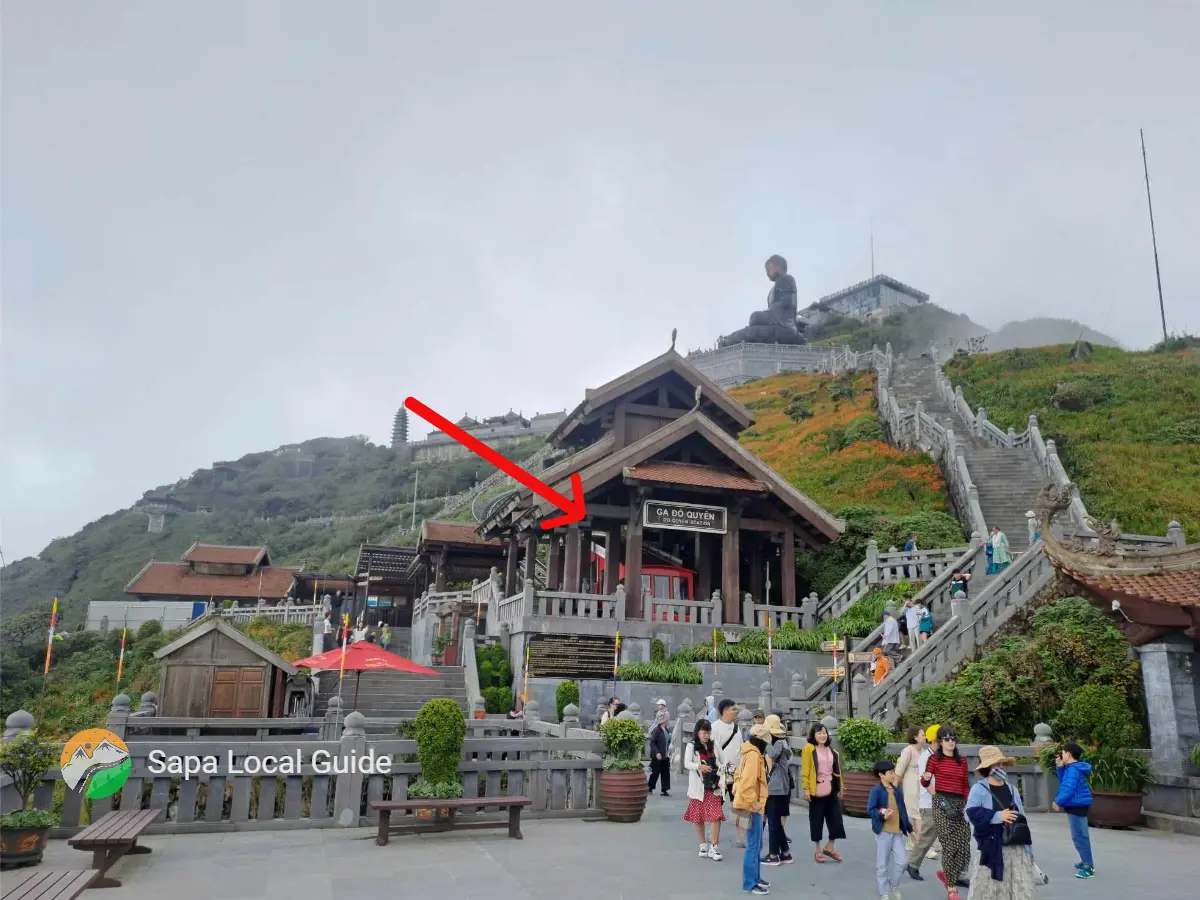
5. Temples and gardens on Fansipan
On Fansipan, there are several temples you can visit. When visiting, be sure to wear modest and respectful clothing. There are 11 spiritual attractions, and you’ll also find many gardens. The most impressive sights include The Guanyin Statue, The Bao An Zen Monastery, The Great Buddha Statue, The Grand Belfry, and the Stupa. These are all part of SunWorld Fansipan Legend park and are not very old. They might not feel very authentic, but they offer great views.
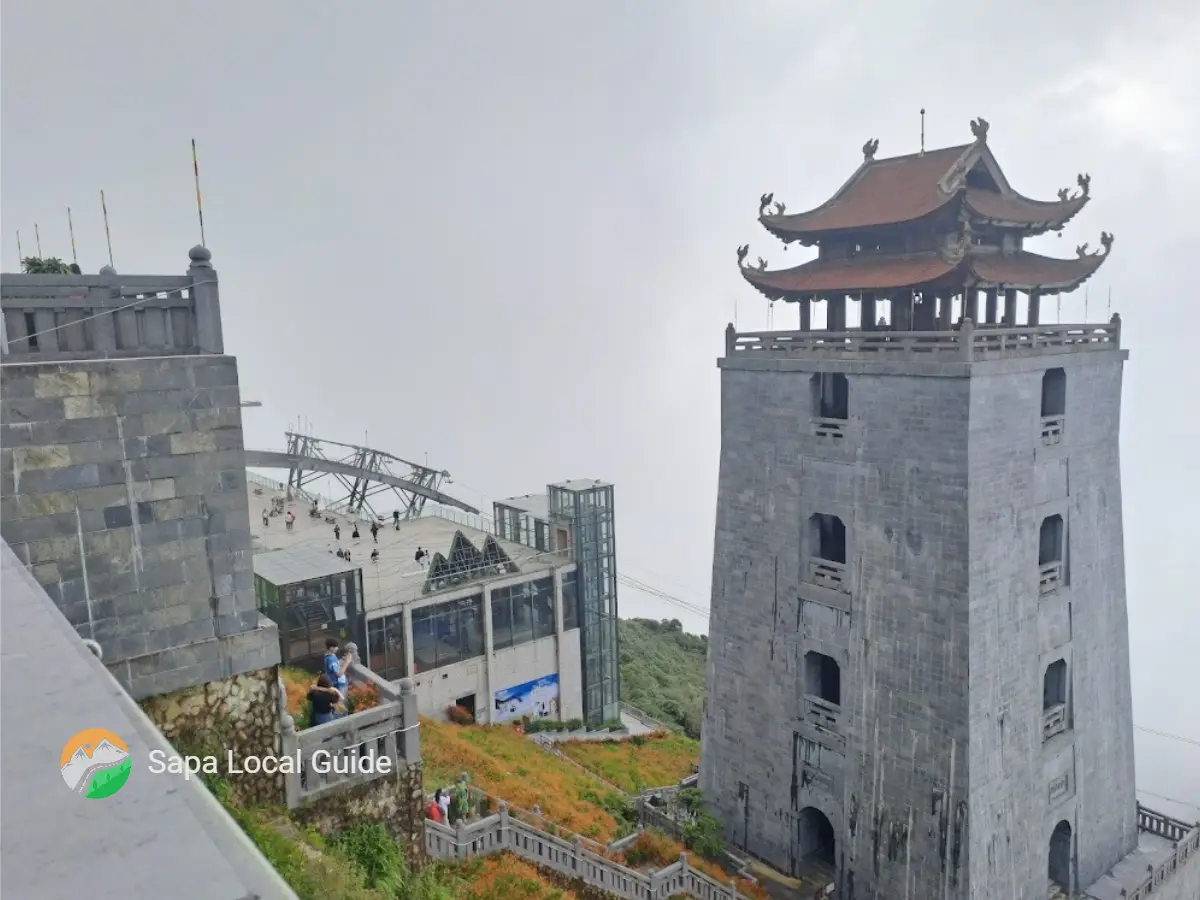
6. Tallest flagstaff of Indochina
This flagpole at Fansipan isn't as impressive as the Lung Cu flag tower in Ha Giang. However, SunWorld says it is the tallest flagpole in Indochina. It stands 25 meters tall, and its base has detailed carvings that show different parts of Vietnamese culture. These include Cham Towers, stilt houses from the Central Highlands, Northwestern cultures, and the New World Wonder.
7. Useful facilities
There may not be a lot of special things here, but there are a few restaurants on the same level as the top cable car station. They are a bit more expensive than city restaurants, but it's nice to have lunch here before you go back down. There are also a few cafes where you can get a hot drink on cold days or relax after walking to nearby temples. Plus, there are four shops where you can buy snacks and souvenirs.
8. Tram Ton Pass and waterfalls
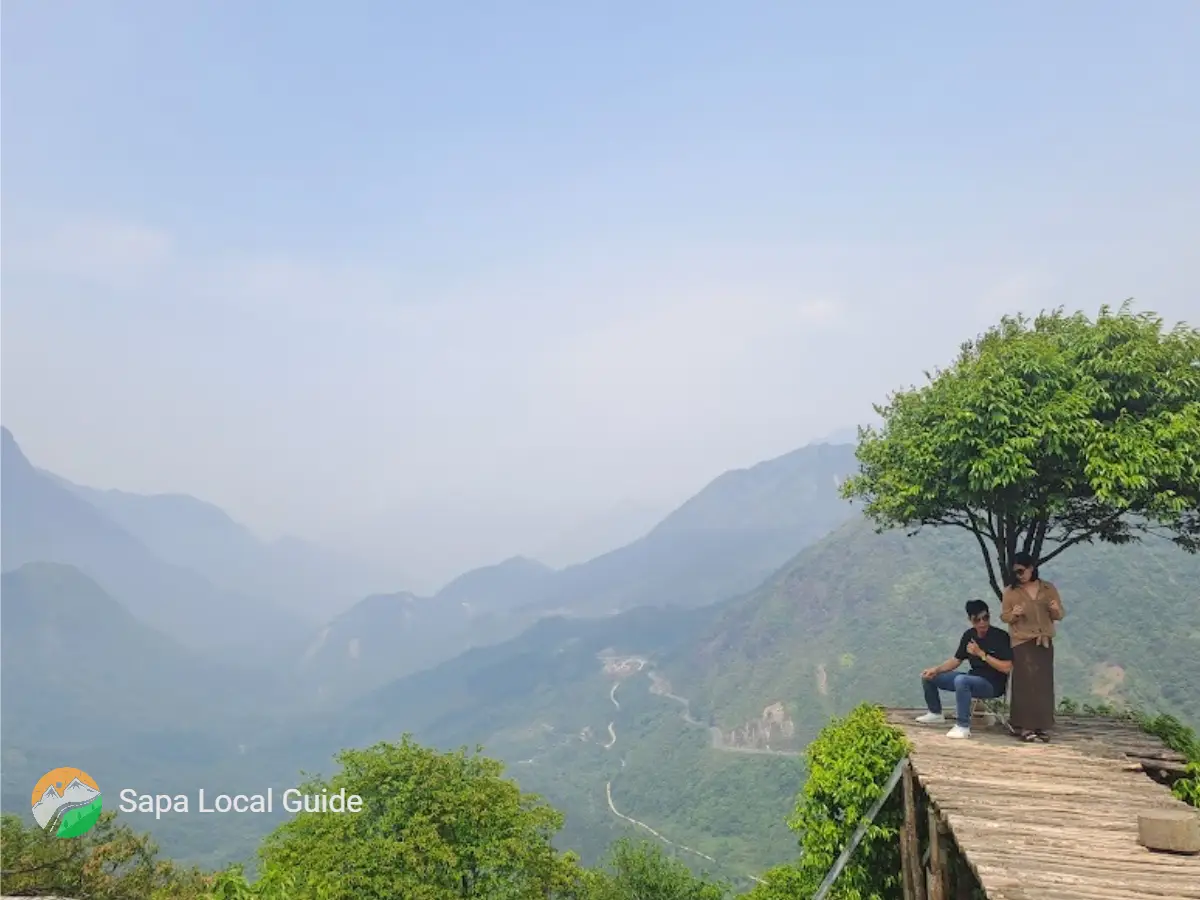
On the other side of Fansipan from where Sapa is, you’ll find Tram Ton Pass. This is the highest mountain pass in Vietnam, with amazing views. It’s about 17 km from Sapa and can be reached by taxi or car, or you can rent a motorbike in Sapa for 100,000 VND to 200,00 VND depending the Motorbiker per day. Besides the pass, there are two waterfalls. The Silver Waterfall is right by the road, and to get to the Love Waterfall, you need to hike for about half an hour through a beautiful forest. Near the Love Waterfall, you’ll also find the start of the path to climb Fansipan.
To visit Fansipan, you first need to travel to Sapa. From a place in Vietnam or Hanoi, you can take either a night train to Lao Cai, a night bus, or a limousine van directly to Sapa.
The cable car station for Fansipan is located in the Sun World Fansipan Legend area, about 3 kilometers from Sapa's town center. You can reach the cable car station in a few ways: by taxi, train, or on foot.
Taxi: A taxi will take about 10 minutes and cost around VND 40,000. It’s the fastest and easiest way.
Walking: The station is not too far from town. You can walk from the stone church in Sapa center to Thac Bac crossroad, then turn left onto Nguyen Chi Thanh Street and walk straight to the cable car station. It’s about 2,5 km, and there are many signs to guide you.
Train: The most fun option is the Muong Hoa mountain train. This funicular train connects Sapa to the Fansipan cable car station. The ride is only about 2 km, but it offers great views. The train station is next to the MGallery hotel in Sapa and takes you to the Fansipan cable car station. It travels through tunnels, over a viaduct, and shows you the beautiful Muong Hoa Valley.
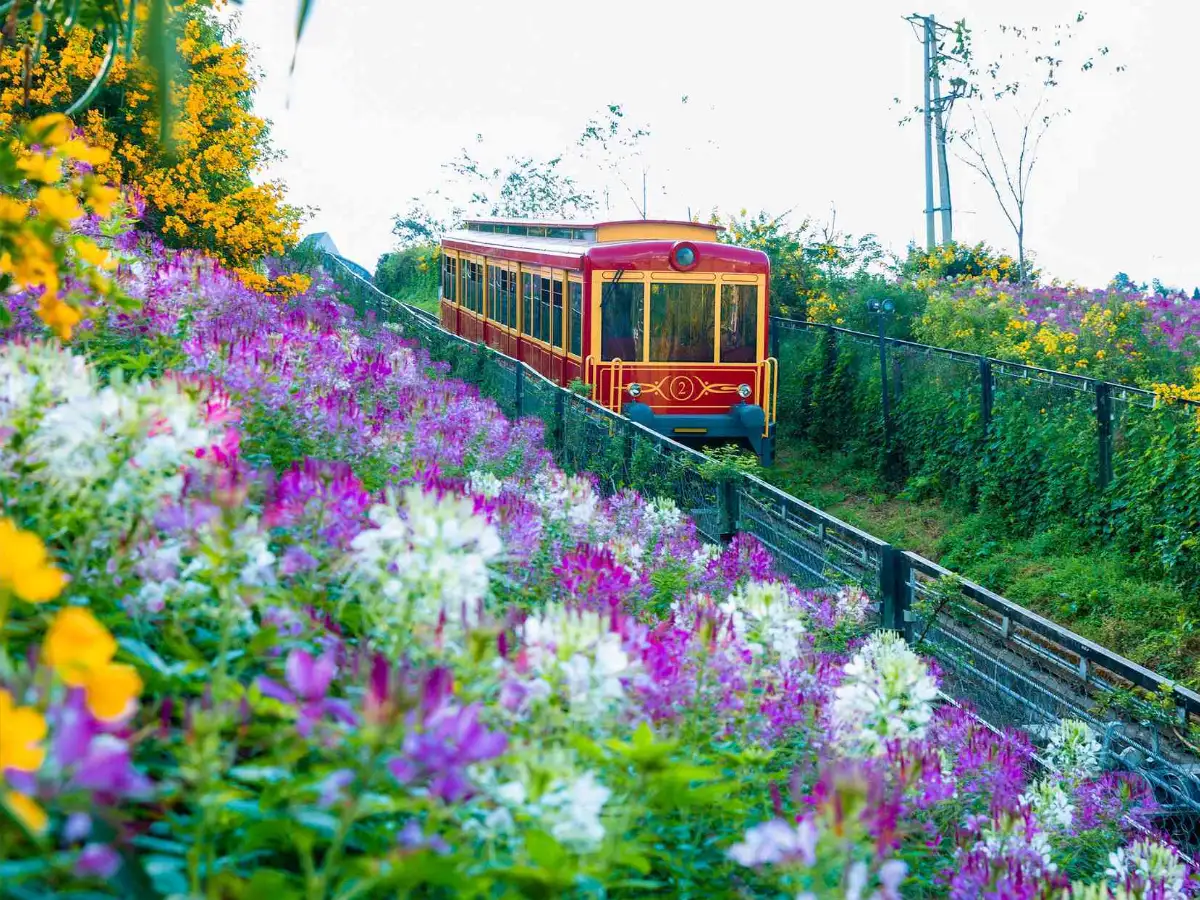
The best times to visit Fansipan mountain are in Spring (March to May) and Autumn (September to October). During these months, you have the best chance of clear days and beautiful views. The weather is also nice—not too hot and not too cold.
You can visit Fansipan any time of year, but in summer (June to August), it often rains a lot and gets very hot. In winter (December to February), it can be very cold, and there might even be snow.
=>Read here more about the best time to visit Sapa Here!
Before the cable car, Fansipan had at least 100 climbers each day. After the cable car was built, the number of climbers dropped by 70%. Some people chose not to use the cable car and avoided Fansipan because they thought the top had become too touristy.
Even with the cable car, reaching the top of Fansipan is still an adventure. You can meet other travelers, enjoy the adventure, and talk to local people.
For the best experience, try climbing between October and April. In summer, it can rain and make the path slippery, even with good shoes. December and January can be very cold, and it might even snow at the top!
There are different the Sapa local guide tour options based on how adventurous, tough, and long you want your trip to be. The tours range from 1 to 4 days.
There are 3 main routes to the top, each with its own level of difficulty and length:
You can choose between a private trek or a group trek. A group trek can be more fun with campfire chats and social time. A private trek lets you go at your own pace and plan your trip.
You officially need a Sapa local guide to go on this trek. Some people go without one, but it’s not recommended. In the past, people have lost their way, and there have even been fatal accidents. Always bring a guide! Guides also help with permits and notify local authorities about your walk.
Before choosing a guide, check their reviews and prices carefully. You can also choose a local guide when you arrive in Sapa. This way, your money goes directly to local families. If you’re worried about this, it’s safer to book a trek through a travel agency.
Officially, you need a guide to go. Most people who book a local guides, no matter which path they choose, take the Tram Ton route. You'll be picked up early, around 7:00 or 8:00 AM, because guides think it takes all day to get to the campsite. But if you're a bit fit, it will take less time. The time also depends on how many photos you want to take. Stay alert during the ride over the Tram Ton pass, the highest mountain pass in Vietnam.
You’ll likely have a local porters, local tour guide and chefs with you, carrying some of your gear. Many parts of the trail are made easy for tourists, with paved steps, ladders, and a clear path. You'll stop for lunch prepared by the porters.
The basecamp is at 2800 meters, so if you get altitude sickness, drink lots of water when you arrive. Remember, there’s no electricity, the toilets are squat toilets, and if you go in winter, the water will be very cold.
It’s a good idea to wake up early, around 5:00 am to watch the sunrise and avoid the cable car crowds. It’s a great experience to see the sun rise over the mountains.
Tip! Want to climb Fansipan? Check out our Sapa Local Guide special Fansipan climbing tour
Is the Fansipan cable car worth it?
The views from the top of Fansipan Mountain are stunning on clear days, but clouds often block the view. The temples and pagodas at the top are not old and are part of the Fansipan Legend attraction. If you have only a few days in Sapa and want a more authentic experience, visiting the minority villages in the valley and seeing the beautiful rice fields is a better choice.
Where is Fansipan Mountain?
Fansipan Mountain is in Lao Cai Province, near Sapa, Vietnam.
How much is the Fansipan cable car?
The price is 850,000 VND for adults and 550,000 VND for children. Kids under 1 meter tall can go for free.
What is Fansipan Legend?
Fansipan Legend is an attraction by Sun World, a big entertainment brand. They also own Asia Park and Ba Na Hills near Da Nang. Fansipan Legend includes the cable car, a mountain train, and several temples at the top.
What does Fansipan mean?
The name Fansipan doesn’t have a meaning in Vietnamese. It is thought to come from “Hủa Xi Pan,” which means “the tottering giant rock” in the Hmong language, spoken by the people living around Sapa.
Are you looking for a Sapa Local tour or service related to this article? Let us know what you need by filling out this form. We specialize in small group trips and customized private tours to give you an authentic and personalized experience. Whether you want a half-day tour, a multi-week adventure in Sapa Vietnam, or a private driver, we can help. As local guide experts, we are proud to create unforgettable trips that fit your interests and schedule.
=> See Fansipan tour Here!
Complete with itinerary, destinations, food, accommodation and tips!
